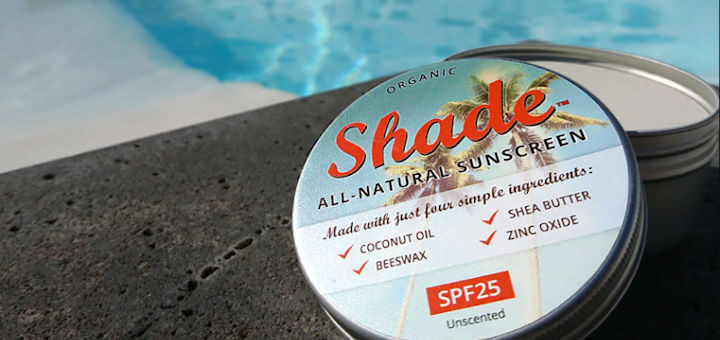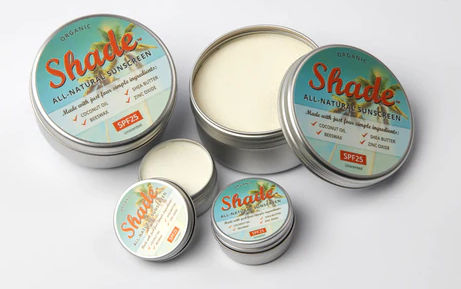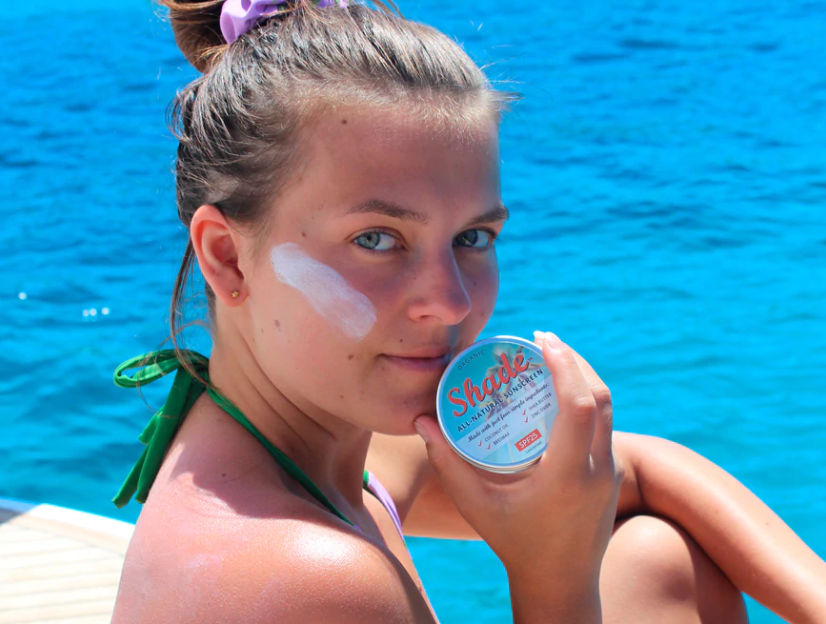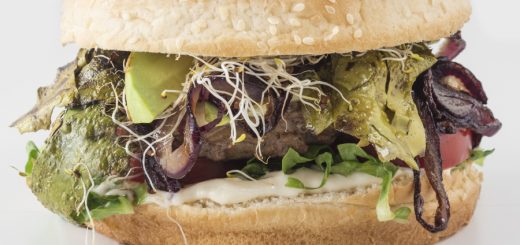
Questions & Answers – Shade
Now the weather is warming up and you might be spending more time outside in the sun it is important to think about protecting your skin. But there is a lot more to sunscreen than you think and the considerations your must make to protect your skin and minimise your impact on the environment. Shade is the ideal choice if you are looking for a non toxic sunscreen with a minimal impact. We spoke with founder Tania Wedin to find out more…
Q: What inspired you to create Shade?
I had to look for a sunscreen for my daughter to use at school. Having failed to find a brand that suited my requirements i.e. all-natural with no toxic or unnecessary ingredients and not in plastic, I decided to make my own, researched the internet for the best quality and most effective natural sunscreen active ingredients, found non-Nano zinc oxide, played with it in various carrier formulas, found it worked brilliantly and friends and family also wanted it, and thus Shade was born.
Q: Is Shade reef safe?
Shade™ does not contain any of the ingredients in the HEL list, which are:
- Any form of microplastic sphere or beads;
- Any nanoparticles like zinc oxide or titanium dioxide;
- Oxybenzone;
- Octinoxate;
- 4-methylbenzylidene camphor;
- Octocrylene;
- Para-aminobenzoic acid (PABA);
- Methyl Paraben;
- Ethyl Paraben;
- Propyl Paraben;
- Butyl Paraben;
- Benzyl Paraben;
- Triclosan.
Although we haven’t yet sought Protect Land + Sea certification from the Haereticus Environmental Laboratory, we have not yet been able to find any research that claims the non-nano zinc oxide in Shade™ that we use is damaging to coral or marine life – all the studies point to nanoparticles as a threat. So although we as the manufacturer don’t as yet make a ‘reef safe’ claim specifically, many people who advocate its use in the sea believe it is safe.
Q: What ingredients is Shade made from?
Soil Association Certified Organic Unrefined Shea Butter, Soil Association Certified Organic Unrefined Coconut Oil, Beeswax and Non-Nano Zinc Oxide. And that’s it! No long list of dubious chemicals you’ve never heard of in the ingredients!

Q: What does SPF mean and why is Shade SPF25?
SPF means ‘Sun Protection Factor’ and indicates that you are protected from UVB rays for a certain length of time longer than it would normally take to burn, under the same environmental conditions, without any protection whatsoever.
In the case of SPF25, it means that 96/100 photons (96%) are prevented from reaching the skin (provided an adequate amount of sunscreen has been applied) – meaning that 4 photons are still reaching the skin. By comparison SPF50 only enables 2 photons in every 100 to reach the skin. To work out percentage of efficacy, see how many times 25 goes into 100, then take that number away from 100 and you have a percentage of efficacy at protecting from UVB rays.
We set out to make a sunscreen with as few natural ingredients as possible to provide an option to those who cannot use regular formulas due to skin allergies etc. and were able to make Shade™ with only four. A very high SPF using only four ingredients is not easy to achieve without having a very thick, impractical, chalky white formula, which many people would be tempted to apply more thinly, thus dangerously reducing the claimed SPF, this would be counterproductive, and we’d need to look at adding other actives to achieve something more practical whilst retaining the efficacy. There are many brands which have achieved a higher SPF with more ingredients than four, so we don’t feel we need to reinvent the wheel as these options are already out there.
We are inclined to agree with the Environmental Working Group about the pitfalls of high SPF products. You can read them here.
In some situations, however, SPF25 is simply not strong enough, such as at high altitude where the atmosphere is thinner allowing more UV rays to reach you, and in snowy conditions where there is a much higher level of reflection (up to 80% more). In these situations, cover up as much as possible and lay your Shade™ on thick, almost like war paint (!) or find an alternative high SPF if you cannot keep adequately covered.
Q: What are the benefits of using a tin instead of a plastic bottle
Firstly, it’s not plastic, and we hate plastic. So much plastic waste is found discarded on our shorelines it’s shameful. Secondly, it can be reused for anything you want it to be reused for, thirdly, you can use up every last bit of its contents because you can easily get at it. The aluminium tin is infinitely recyclable.
Q: Is Shade safe for my children to use?
We get a lot of people asking if it’s OK to use Shade™ on babies and children, the quick answer is “Yes.” In fact, all the ingredients in our Shade™ All-Natural Sunscreen are edible, so if your baby accidentally ingests it, it’s highly unlikely to cause any issues. Shade™ is probably one of the safest sunscreens on the market today, however, we absolutely do not recommend leaving your baby or child in the sun for a prolonged period of time. As you are no doubt aware, sunscreen should be considered only as an additional measure of protection, not the main measure of protection for babies, children or adults. If you want your baby to get their dose of Vitamin D, expose them to the sun in the early hours or later hours of the day, but always keep a vigilant eye on them. We have written a blog post addressing whether Shade is safe for children here.
Q: Is Shade a chemical or mineral sunscreen and what is the difference
Shade is a mineral-based sunscreen. The active ingredient, Non-Nano Zinc Oxide, sits on the skin’s surface and physically prevent UV rays from penetrating the skin. A chemical sunscreen active ingredient is designed to absorb into the skin and breaks the sun’s rays down into heat which is then distributed within the skin. Mineral sunscreens need to be topped up regularly to ensure a layer of sunscreen still remains on the skin to protect, as it can be rubbed off, chemical sunscreens however break down in the skin, and need reapplying to counteract this degradation and ensure the skin is still protected. There has been a shift towards mineral-based sunscreens in recent years as some sunscreen ingredients in chemical sunscreens have been found to absorb into the bloodstream with potentially damaging health effects, such as disruption of hormones. They have also found to be damaging to marine life, with some countries such as Hawaii banning them altogether to protect their coral reefs. Although some studies have implicated mineral nanoparticles in sunscreens to also be damaging to marine life, as yet no studies have found non-nano zinc oxide to be a culprit in this damage.

If you are looking to try a plastic free sunscreen then Shade is the ideal choice. We have a large 100ml option along with a smaller 15ml which is great if you’d either like to test it before buying the larger tin, or simply have a handy tin you can slip in your pocket or pop in your bag when out and about. Remember you can use up the small tin and add more to it from a bigger tin for convenience.



